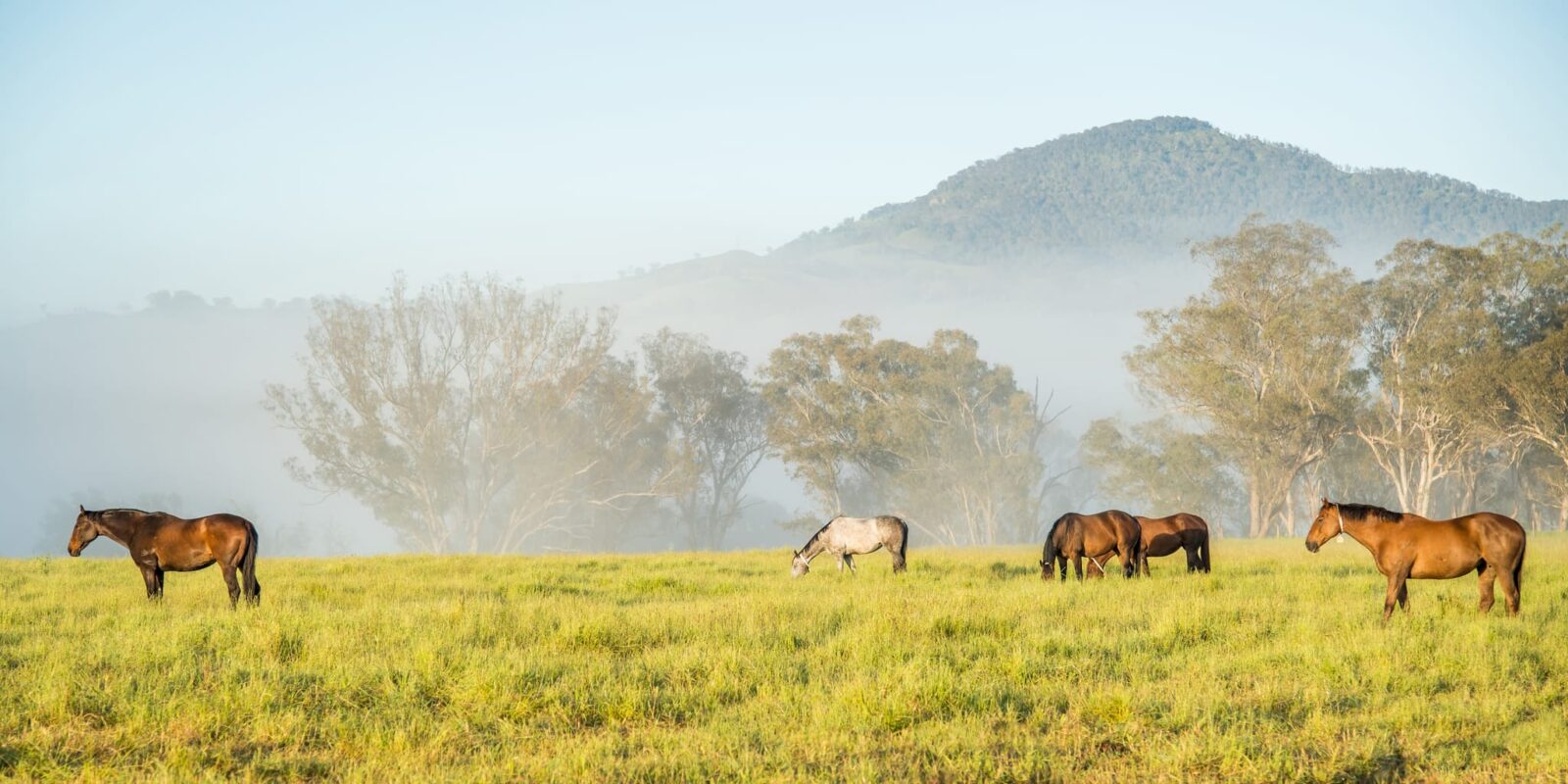National Strategy launched to connect Australian students with Food and Fibre Education
 THOROUGHBRED HORSES / Friday, 24 January 2025
THOROUGHBRED HORSES / Friday, 24 January 2025
Championing thoroughbred welfare: Investing in best practices, workforce safety, and environmental sustainability

The AgriFutures Thoroughbred Horses Program invests in research, development and extension (RD&E) that improves the sustainability, productivity and competitiveness of the Australian thoroughbred industry.
The thoroughbred breeding industry in Australia is responsible for generating more than $1.16 billion to the Australian economy and is the second largest in the world. Through investment in targeted and high-impact projects, the AgriFutures Thoroughbred Horses Program focuses on ensuring the industry remains competitive and profitable, with its RD&E Plan guiding investments across four key priority areas:
- Thoroughbred horse welfare, workforce safety and environmental sustainability
- Thoroughbred breeding
- Workforce, industry and community engagement
- Thoroughbred diseases and parasites
The AgriFutures Thoroughbred Horses Program has 13 research projects currently underway across the priority areas, with six of these projects addressing the first priority area on thoroughbred horse welfare, workforce safety and environmental sustainability.
Ongoing improvement in the welfare of the thoroughbred horse through all stages of life is a high priority. Under this priority area, the Program will invest in projects that promote best practices in equine welfare, improve health and safety programs for industry workers, and develop data on carbon management on thoroughbred farms. This will lead to a better understanding and implementation of equine welfare practices, increased exposure to health and safety programs resulting in improved safety practices, and a clearer understanding of the industry’s carbon footprint and future research priorities.
Some of the key projects under priority one are outlined below.
Develop learning modules for Thoroughbred Breeders Australia (TBA)
This project is developing learning modules for TBA Learning, the Australian thoroughbred breeding industry’s home for online learning. These modules help to ensure the welfare of thoroughbred horses by educating and training early career thoroughbred staff. Industry experts are engaged to explain concepts surrounding horsemanship and horse care that have a positive impact on horse and human welfare in the Australian thoroughbred breeding industry. Modules include:
- Rehoming thoroughbreds/caring for your thoroughbred
- Diet and how it affects the thoroughbred
- Introduction to becoming a breeder
- Working at horse sales
TBA added the ‘Working at horse sales’ module in January 2025 ahead of the yearling sales season. This module provides information on the tasks people will undertake when working for a farm at a thoroughbred sale including identifying horses, understanding the areas of the sales complex, getting the horse ready to show a buyer and understanding what occurs at the parade ring.
The modules are published on the TBA Learning website and will be available free of charge to all industry participants.
Yearling x-ray lesions and the effect on long term performance in thoroughbred horses
Led by PhD student Danielle Crosby, this project is investigating the prevalent and clinically significant radiographic lesions identified in a previous research study. The initial study looked at more than 8,660 thoroughbred yearling x-rays and highlighted several abnormalities that affect racing performance and demonstrated that others have little or no impact.
Dani’s project will build on this and will define specific parameters for each lesion and correlate these parameters to any potential impact on performance. This will increase the accuracy of x-ray risk ratings for individual lesions and give vendors and buyers even greater confidence in the sales ring. The research may also highlight veterinary and management practices that improve or help prevent problematic lesions and support better welfare outcomes.
AMR equine modules and supporting materials
Thoroughbred industry stakeholders will have at their fingertips scientifically sound information on the appropriate use of antimicrobial drugs in horses thanks to new guidelines being produced by an Australian team. Dr Melanie Latter and colleagues at the Australian Veterinary Association developed the guidelines to help the industry tackle antimicrobial resistance (AMR) resistance to antibiotics used to treat infections — an issue of global concern.
The Australian Antimicrobial Prescribing Guidelines for Horses are aimed at veterinarians and will provide comprehensive best-practice information on common clinical syndromes, including diagnostic approaches, likely pathogens and recommended antibiotic treatments. The Guidelines will help to keep AMR at bay to ensure the effectiveness of medicines into the future.
Other projects underway in this priority area include:
- Reducing the effects of heat stress and ageing on sperm DNA damage in thoroughbred stallions
- Detecting the silent carrier: can we eradicate strangles from endemic premises?
- Epidemiological and bacteriological analyses of salmonella infection in the Australian thoroughbred horse breeding industry
The Program also recently completed three key projects in this space: Endoscopy of the upper respiratory tract at Australian thoroughbred yearling sales: Can we do better?, Maintaining welfare and integrity in Australian racing and Sesamoid bone adaptation and repair in thoroughbred race horses in training.
Subscribe to keep up to date with the latest research projects Thoroughbred Horses
To learn more about the Thoroughbred Horses Program and it’s RD&E Plan visit
Latest News
-
National Strategy launched to connect Australian students with Food and Fibre Education WORKFORCE AND LEADERSHIP / 24.01.25
WORKFORCE AND LEADERSHIP / 24.01.25 -
Supplementary feeding can build and maintain hives amid stress HONEY BEE & POLLINATION / 24.01.25
HONEY BEE & POLLINATION / 24.01.25 -
AgriFutures Rural Women’s Award celebrates 25 years of impact WORKFORCE AND LEADERSHIP / 24.01.25
WORKFORCE AND LEADERSHIP / 24.01.25 -
Industrial Hemp: Australia’s next sustainable super crop INDUSTRIAL HEMP / 24.01.25
INDUSTRIAL HEMP / 24.01.25






